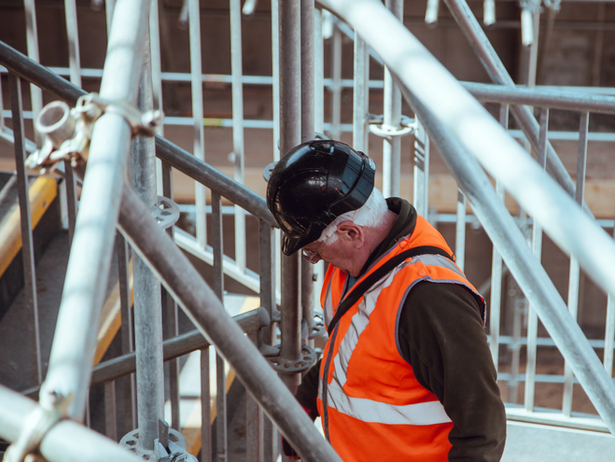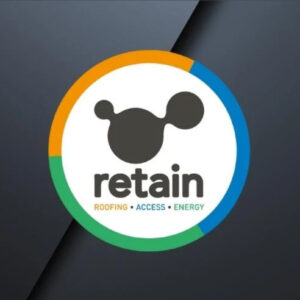If you’re looking to get into the construction industry as a scaffolder, keep reading.
What is scaffolding?
You’ve likely seen it during your lifetime. They are tall steel structures surrounding buildings, with wooden boards, harnesses and many other bits of equipment. They are essential in construction, making sure that workers can operate safely and efficiently. They do come in many other forms and designs, depending on the job they are required for.
What are different types of scaffolding?
Single scaffold – usually set parallel to a wall and is mainly used for brickwork on homes.
Double scaffold – usually used for stonemasonry. It uses two rows of scaffolding, the first row being roughly 20-30cm from the wall with the other about 1m away, connected with cross beams and braces.
Cantilever – used for when the ground can’t support scaffolding, like on a busy street/road that can’t be closed. It uses needles, mainly made of timber, that extend out from holes in the wall of the building being constructed.
Suspended scaffolding – sometimes used by window cleaners, these structures are suspended from the roof and hang over the building.
Steel scaffolding – the most common form of scaffolding you are likely to have seen. It’s fixed together with steel couplings or fittings. High strength, durability, fire resistance and safety for workers.
Patented scaffolding – readymade steel scaffolding which features an adjustable working platform. Easy to assemble and disassemble.
Trestle scaffolding – mainly used for indoor work up to 5 metres. Made up of tripods or ladders as the base with boards laid across the top.
Ariel lifts – there are 3 main categories: scissor lifts, boom lifts and tele-handlers. They are mobile, adjustable platforms that can lift heavy weight or workers without the need to build a scaffolding frame.
This list isn’t exhaustive and there are some variations of each type of scaffolding. The main thing is that they are checked by competent, trained individuals and that they are safe to work on. Not all companies will use all types of scaffolding either, so it’ll be important to research the company that interests you the most to see what scaffolding systems they provide.
When is scaffolding required?
A risk assessment is usually carried out by a trained individual to conclude whether scaffolding is needed or not. These are required by law where any workers are working at height, to ensure the job is carried out safely. Some low-risk jobs may conclude that a ladder is safe to use, such as painting a house. If the individual will be working at height for a long period of time or is required to move around, then an appropriately designed scaffolding system will be used.
What does a scaffolder do?
Scaffolders are essential within the construction industry, many construction crews require access using scaffolds, rigs, guard rails and planks to do their work. The main responsibilities of a scaffolder include: unloading scaffolding equipment on-site, ensuring a stable base for scaffolding, erecting scaffolding poles, fixing scaffolding to buildings or structures, laying planks for workers to walk on, fixing guard rails and safety netting, dismantling scaffolding when a project is complete, creating different kinds of platforms from simple scaffolding through to complex structures such as suspended scaffolding, cantilever drops and temporary roofs, and working on-site in all weather.
What are desirable scaffolder skills?
- Here are some skills that a scaffolding company will look for in an individual:
- Ability to work confidently at heights
- Excellent hand-eye coordination
- Good level of physical fitness
- Awareness of health and safety
- Ability to understand technical drawings and plans
- Good written and verbal communication skills
How to become a scaffolder?
Here are some things that you’ll need in order to be an effective employee. You may need a Construction Skills Certification Scheme (CSCS) card to work on a construction site. It may also be beneficial to achieve your GCSEs in English and Maths, so that you can attend an apprenticeship or college for some more advanced learning, such as Construction Skills. There is funding available for certain types of courses and programmes. You can also apply directly to employers if you have some previous experience or your CSCS card already.
Hopefully this will have shed some light on the industry, especially if you are new to it or are looking to get into it. A scaffolders job is a dynamic role and can be very rewarding for the right individual. And there are plenty of options if you have been a scaffolder for some time and are looking to progress your career. Remember, there are rules and regulations to adhere to such as the Working at Height Regulations 2005 and Health and Safety at Work 1974, so it’s important to research these too, to make sure that you are an effective and safe scaffolder.
To learn more about our services or to enquire about anything else, please contact the Retain team.


